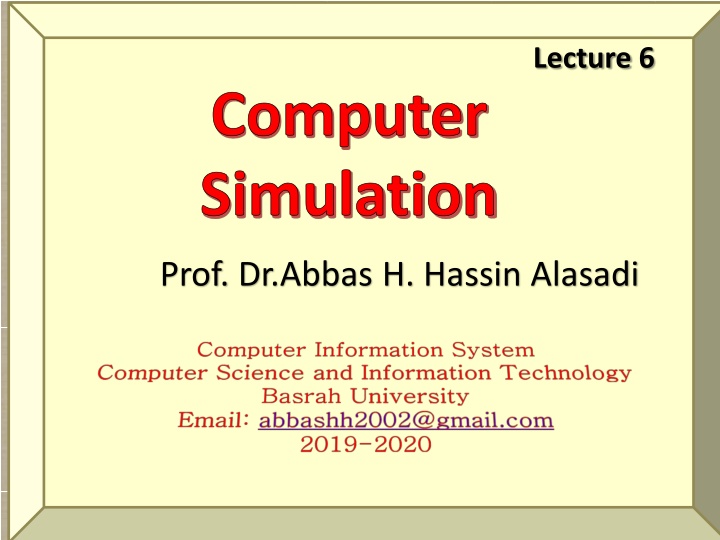
Queuing Models: Understanding Customer Arrivals and System Performance Analysis
Explore the importance of queuing models in analyzing service facilities, production systems, and more. Learn about customer populations, arrival patterns, queue management, and system capacity for effective performance evaluation. Queuing models provide a powerful tool for designing and optimizing systems to reduce congestion and enhance efficiency.
Download Presentation

Please find below an Image/Link to download the presentation.
The content on the website is provided AS IS for your information and personal use only. It may not be sold, licensed, or shared on other websites without obtaining consent from the author. If you encounter any issues during the download, it is possible that the publisher has removed the file from their server.
You are allowed to download the files provided on this website for personal or commercial use, subject to the condition that they are used lawfully. All files are the property of their respective owners.
The content on the website is provided AS IS for your information and personal use only. It may not be sold, licensed, or shared on other websites without obtaining consent from the author.
E N D
Presentation Transcript
Lecture 6 Computer Simulation Prof. Dr.Abbas H. Hassin Alasadi abbashh2002@gmail.com
Queuing Models In a typical queuing model customers (people, machines, requests, etc.) arrive from time to time and join a queue (waiting line), are eventually attended by a server (person, machine, computer, etc.), and finally leave the system. Queuing models, whether solved mathematically which is only possible for relatively simple models or analyzed through simulation, provide the analyst with a powerful tool for designing and evaluating the performance of queuing systems. 2
Queuing Models Queuing models have found widespread use in the analysis of service facilities, production and material-handling systems, computer and communications systems, and many other situations where congestion ( ) or competition for scarce resources can occur. CMS (Content management system) techniques may be used to generate a number of artificial histories of a complex system and to obtain estimates of desired system-performance measures. 3
Queuing Models The elements of a single queue queuing system:
Queuing Models Elements 1. Population of Customers can be considered either limited (closed systems) or unlimited (open systems). Unlimited population represents a theoretical model of systems with a large number of possible customers (a bank on a busy street, a motorway petrol station). It is necessary to take the term "customer" very generally. Customers may be people, machines of various nature, computer processes, telephone calls, etc.
Queuing Models Elements 2. Arrival defines the way customers enter the system. Mostly the arrivals are random with random intervals between two adjacent arrivals. Typically the arrival is described by a random distribution of intervals also called Arrival Pattern. 3. Queue represents a certain number of customers waiting for service (of course the queue may be empty). Typically the customer being served is considered not to be in the queue.
Queuing Models Elements There are two important properties of a queue: Maximum Size and Queuing Discipline. Maximum Queue Size (also called System capacity) is the maximum number of customers that may wait in the queue (plus the one(s) being served). Queue is always limited, but some theoretical models assume an unlimited queue length. If the queue length is limited, some customers are forced to reject without being served.
Queuing Models Elements Queuing Discipline represents the way the queue is organized (rules of inserting and removing customers to/from the queue). There are these ways: 1. FIFO (First In First Out) also called FCFS (First Come First Serve) - orderly queue. 2. LIFO (Last In First Out) also called LCFS (Last Come First Serve) - stack. 3. SIRO (Serve In Random Order).
Queuing Models Simulation is often used in the analysis of queuing models. Typical measures of system performance include server utilization (percentage of time server is busy), length of waiting lines, and delays of customers. Decision maker is involved in trade-offs between server utilization and customer satisfaction in terms of line lengths and delays. 9
Queuing Models In a single-channel queuing system there are only two possible events that can affect the state of the system. The entry of a unit into the system or the completion of service on a unit The server has only two possible states: it is either busy or idle. 10
Example Single-channel queue serves customers on a first-in, first-out (FIFO) basis 11
Simulation Software The End of Lecture 6 12
